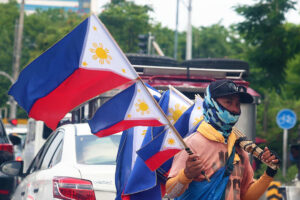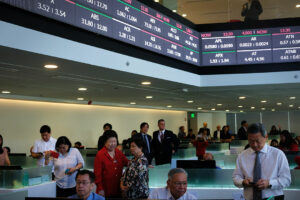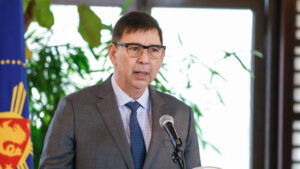Japanese credit watchdog Rating and Investment Information, Inc. (R&I) affirmed the Philippines’ investment-grade “A-” rating with a stable outlook, citing its steady economic growth.
“The Philippines is expected to realize stable economic growth as well as higher income level against the backdrop of robust public and private investments, development of domestic business such as information technology and business process management (IT-BPM) industry, and population growth, among other factors,” R&I said in a statement on Wednesday.
R&I said the Philippines remains one of the fastest-growing economies in Southeast Asia.
For the first half, Philippine gross domestic product (GDP) growth averaged 5.4%, slower than the 6.2% a year ago. This was slightly below the government’s 5.5% to 6.5% growth target range for this year.
“The fiscal balance as a share of GDP has also improved, while government debt ratio will likely start falling in a year or two. The levels of current account deficit and external debts are manageable, hence there is limited concern on the external front,” R&I said, adding the banking sector remains “stable.”
“Based on this recognition, R&I has affirmed the Foreign Currency Issuer Rating at A-,” it said.
In August 2024, R&I upgraded the Philippines’ rating to an “A-” from “BBB+.” The outlook was revised to “stable” from “positive” previously.
According to R&I, a positive or negative outlook is not a statement indicating a future change of rating. If neither a positive nor a negative outlook is appropriate, it assigns a stable outlook.
The credit rater said Philippine economic growth will be driven by infrastructure projects by the government and private sector, as well as expansion by IT-BPM and electronics manufacturing firms.
“As for 2025, the general outlook is that public and private investments will continue to increase with the growth trend of private consumption remaining in place,” it said.
Consumption is expected to get a boost as inflation fell to a near six-year low of 0.9% in July. The July inflation rate was the lowest in nearly six years or since the 0.6% print posted in October 2019.
For the first seven months of the year, inflation averaged 1.7%, a tad higher than the BSP’s 1.6% full-year forecast.
Limited tariff impact
Meanwhile, the Philippine economy will likely see “limited” impact from the higher US tariffs.
“R&I believes that the impact of reciprocal tariffs imposed by the US is estimated to be limited. This is because the tariff rate is kept low at 19% and the proportion of exports to the US in the overall economy is small,” it said.
The US began imposing a 19% tariff on Philippine goods entering the US starting on Aug. 7. The US is one of the top destinations for Philippine-made goods.
“R&I believes that the present level of current account deficit does not necessarily have negative implications in the assessment of creditworthiness, given its potential as basis of future economic growth,” it said.
Data from the central bank showed the current account deficit widened to -3.7% of GDP in the first quarter, versus -1.9% in the same period in 2024. The BSP expects the current account deficit to be -3.3% this year, and -2.5% in 2026.
R&I said the Philippines has a sufficient level of foreign exchange reserves in comparison with imports.
“In terms of international investment position, debts exceed financial assets but net debt hovers at a low level in comparison with GDP. R&I believes that external risk is small in light of these points,” it said.
At the same time, R&I said it expects the Philippines’ fiscal deficit to continue declining in line with the government’s plan.
“R&I believes that government debt ratio will remain within manageable level with the progress in reducing fiscal deficits,” it added.
Government data showed the Philippines’ debt-to-GDP ratio had risen to 63.1% as of end-June, its highest level since 2005. The figure remains above the 60% threshold that multilateral lenders view as manageable for developing economies. The debt ratio is expected to ease to 61.3% by yearend.
The BSP welcomed R&I’s affirmation of the investment grade rating as it reflects the country’s “robust growth, low inflation and strong external position.”
“The low inflation environment is thanks to the agile and evidence-based monetary policy. This environment supports an investment climate that is conducive to economic growth,” BSP Governor Eli M. Remolona, Jr. said.
In a separate statement, Finance Secretary Ralph G. Recto said the rating would help attract more investments, create jobs and boost incomes for Filipinos.
“This is a victory that every Filipino should celebrate,” Mr. Recto said in Filipino. “Because this means that credit rating agencies and investors continue to have strong confidence in us. This will attract more investments, create more quality jobs, increase incomes, and lift more Filipinos out of poverty.”
Meanwhile, Union Bank of the Philippines’ Chief Economist Ruben Carlo O. Asuncion said the investment grade rating boosts investor confidence and improves the country’s access to funding.
“The affirmation by R&I reflects confidence in the country’s policy direction, low inflation environment, and stable banking sector,” Mr. Asuncion said in a Viber message. “This supports investor sentiment and enhances the Philippines’ ability to access funding at favorable terms.”
The Philippines currently holds investment grade ratings with the three major debt watchers. Fitch Ratings rates the country at “BBB,” Moody’s Ratings at “Baa2,” and S&P Global Ratings at “BBB+.” — Katherine K. Chan



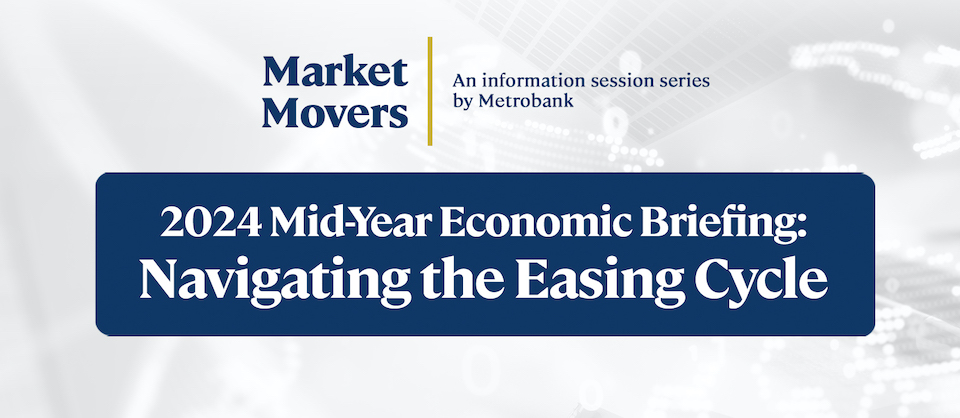


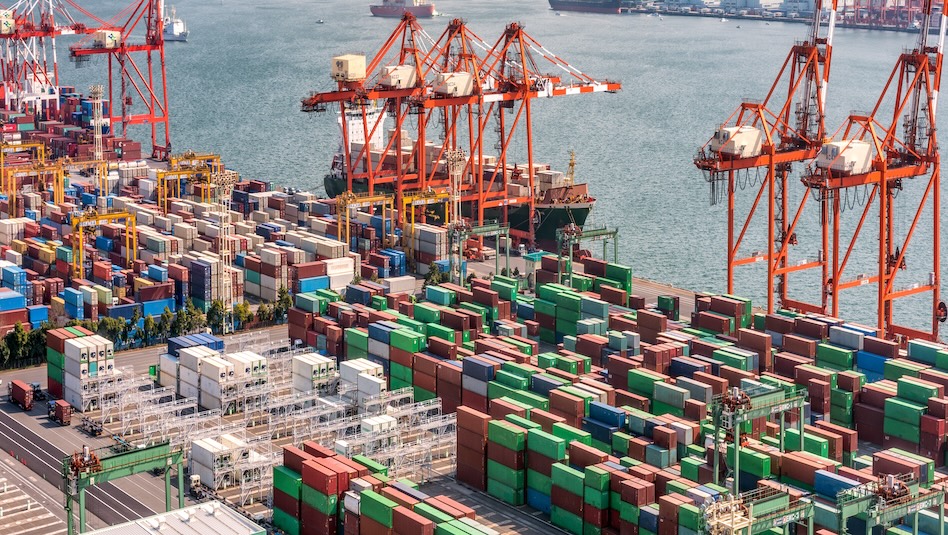
 DOWNLOAD
DOWNLOAD




